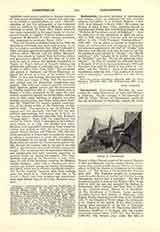

Carcassonne (CARCASSUM), Diocese of, Comprising the entire department of Aude, and suffragan to Toulouse. On the occasion of the Concordat of 1802 the former Diocese of Carcassonne, nearly all the old Archdiocese of Narbonne, almost the entire Diocese of Saint-Papoul, a part of the ancient Dioceses of Met and Mirepoix, and the former Diocese of Perpignan were united to make the one Diocese of Carcassonne; in 1822 the Diocese of Perpignan was reestablished. (I) The Diocese of Carcassonne was founded after 533. The Visigoths sought to compensate themselves for the loss of Lodeve and Uzes by having Carcassonne erected into a bishopric. The first of its bishops known to history was Sergius (589). From 1848 to 1855 the see was occupied by Bishop de Bonnechose, later Cardinal, and from 1855 to 1873, by the mystical writer, Bishop de la Bouillerie. (2) The Archdiocese of Narbonne. Local tradition identifies Paulus, first Bishop of Narbonne, with Sergius Paulus mentioned in the Acts of the Apostles (xiii, 7), but Gregory of Tours assigns the episcopate of St. Paulus to the middle of the third century. Among other incumbents of the See of Narbonne were St. Rusticus (427-61); St. Theodardus (885-93); Guifredus (Guiffroy) of Cerdagne, who was excommunicated several times (1019-79); Guy Foulques (1259-65), who became pope under the title of Clement IV (1265-1268); Bernard de Farges (1311-41), who founded the Narbonne College at Paris; Cardinal Georges d’Amboise, Prime Minister to Louis XII and Archbishop of Narbonne from 1482 to 1485 and from 1492 to 1493; Cardinal Brigonnet (1507-14), chief instigator of the expedition of Charles VIII into Italy, and famous for his opposition to Julius II in the Council of Pisa; Giulio de’ Medici (1515-23), who became pope under the title of Clement VII (1524-34), and Cardinal de Joyeuse (1582-84). In medieval times the Archbishopric of Narbonne was of great importance. For four centuries its jurisdiction extended over a part of Northern Spain, and in the eleventh century it had as suffragans the Dioceses of Toulouse, Beziers, Lodeve, Uzes, Agde, Maguelonne, Carcassonne, Elne, Gerona, Barcelona, Vich, and Urgel. Important councils were held at Narbonne in 589 and in the thirteenth century, and its bishops presided legally over the meetings of the Estates of Languedoc. (3) The Diocese of Saint-Papoul. A Benedictine abbey founded in 760 by Pepin the Short, and named after the holy priest Papoul, martyred near Toulouse in the third century, was created an episcopal see by John XXII in 1317. (4) The Diocese of Alet. A Benedictine abbey founded at Alet in 813 was made an episcopal see by John XXII in 1317. Nicolas Pavillon, a Jansenist, known for his resistance to the commands of the Holy See, was Bishop of Met from 1637 to 1677. (5) The Diocese of Mirepoix. See Diocese of Pamiers.
The history of all this region is intimately connected with that of the Albigenses. The monastery of Prouille, where St. Dominic established a religious institute for converted Albigensian women in 1206, is still a place of pilgrimage consecrated to the Blessed Virgin. St. Peter of Castelnau, the Cistercian inquisitor martyred by the Albigenses in 1208, St. Camelia, put to death by the same sectarians, and St. John Francis Regis (1597-1640), the Jesuit, born at Fontcouverte in the Diocese of Narbonne, are specially venerated in the Diocese of Carcassonne. Notre-Dame de Canabes and Notre-Dame de Limoux, both of which date back to the ninth century, are still frequented by pilgrims. The church of Saints-Nazaire-et-Celle at Carcassonne was rebuilt toward the end of the eleventh century, the first work upon it being blessed by Pope Urban II, who came to Carcassonne to urge the Vicomte Bernard de Trincavel to join the Crusade. The naves of this church are Roman, and the transept and choir Gothic.
Previously to the enforcement of the Law of 1901; there were in the Diocese of Carcassonne Capuchins, Cistercians, Dominicans, Lazarists, Carmelites, and Children of Mary Immaculate. Two important local orders of women care for the sick, and teach: the Sisters of the Holy Family (mother-house at Pezenas) and the Sisters of the Holy Name of Joseph (mother-house at Lusignan). In 1900 the diocese had the following religious institutions: 7 foundling asylums, 22 infant schools, 2 orphanages for boys, 6 for girls, 1 house of shelter, 9 hospitals and homes for the aged, 2 houses of retreat, 8 dispensaries, 1 insane asylum, and 69 houses of hospital sisters. At the close of 1905 (the end of the period covered by the Concordat) statistics showed a population of 313,531, with 37 pastorates, 378 succursal parishes (mission churches), and 40 curacies formerly supported by the State.
GEORGES GOYAU

